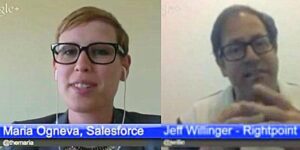
Reboot: Personal Brands and the #TFT13 Conference
Conferences: Who’s redefining the concept, and what does it mean for professional communities and personal brands? The case for crowdsourcing

Conferences: Who’s redefining the concept, and what does it mean for professional communities and personal brands? The case for crowdsourcing

Digital communities are increasingly important to business organizations. But what really makes an enterprise community effective?
Birds aren’t known to be mental giants. After all, does anyone really want to be called a “bird brain?” Yet, when it comes to communities, perhaps one of the smartest things you can do is to think like a bird. Here’s why…
While there are many ways you can establish your personal brand online and offline and inevitably stand out from others in your industry, functional area
Written by Omowale Casselle Recently, I have been paying a lot of attention to different chats that happen on Twitter. Quite honestly, these community focused
An insider’s guide to talent communities: The “why”, “what” and “how” of this important new dimension in workforce management…
What opportunities really lie ahead at the crossroads of workplace learning and social media? It’s a topic we live with every day at TalentCulture – as our ongoing #TChat “learning community” conversation continues…
How can your organization make collaboration a competitive advantage? Here are some great ideas to put your workforce on the right track…
What’s a workplace culture audit – and why should you care? More than 250 talent-minded professionals joined the #TChat Twitter conversation to share their thoughts – what a dynamic forum!
#TChat Preview – Come on down! We’re joining with Monster.com to crack open the concept of a Workplace Culture Audit. Join us to discuss the what, why and how of this approach…
How can you use inquiry as a way to engage others and grow professionally, as well? Ideas for developing better engagement skills and supporting learning cultures…
In social communities, intent is more than interest, more than commitment, more than an informed notion. It’s the true power behind the community, because people come to communities with a purpose, an intent. They are looking for a place to be, a place to learn, a place to grow and interact in a meaningful way.